Your Cart is Empty
Injury
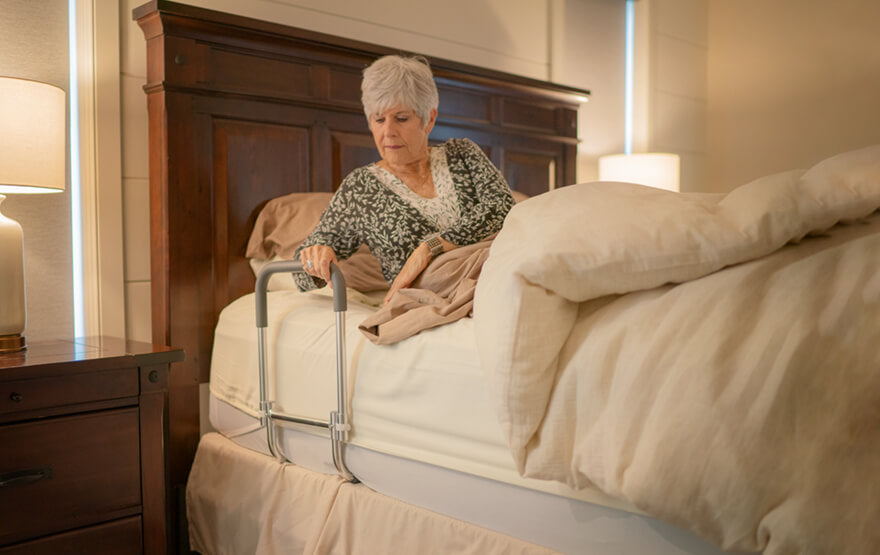
Bedroom safety for seniors is important as falls are the leading cause of injury in the elderly, resulting in over 2.8 million emergency department hospital admissions annually. Since we spend a significant amount of our lives sleeping, bedroom safety for seniors should be a high priority for family caregivers and others caring for an elderly person. Whether your loved one is recovering from surgery, an injury, or simply needs a little extra help getting around safely, a well-organized and thoughtfully planned bedroom decreases the risk of falls or other accidents, increases safety and independence, and provides a comfortable and safe sleeping environment. Keep scrolling to learn about the most common bedroom hazards and what changes you can make.
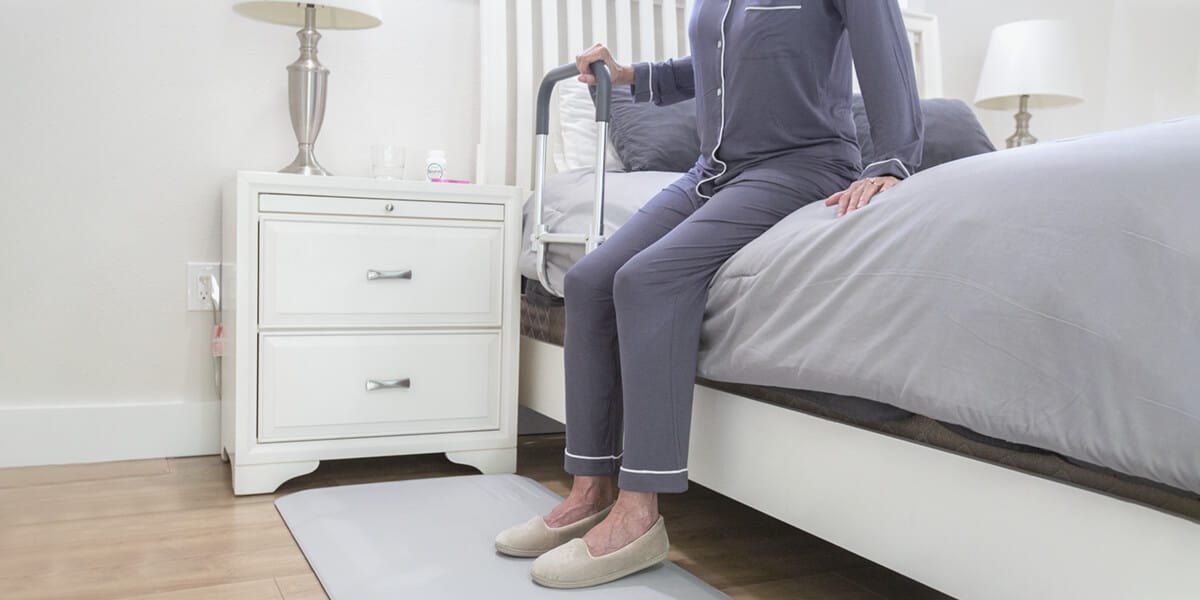
For someone who has limited mobility, getting in and out of bed can be a daunting task and it’s important to minimize the risk of a fall or injury as much as possible. Here’s how you can take precaution and make this transition safer for both you and your loved one.
A bed rail is the perfect addition to any bedside, can be easily installed, and doesn’t break the bank. Place the rail in between the mattress and box spring where your loved one typically exits the bed to provide leverage and support so he or she can pull up to a seated position, scoot, and exit the bed.
Tip: Position one side of the bed up against a wall to reduce the risk of falling out of bed.
Maintaining independence is a big deal and still being able to complete tasks without the assistance of a caregiver can positively impact your loved one’s confidence and morale without sacrificing safety. When getting in and out of bed, consider the use of personal transfer devices in conjunction with a bed rail. These can be tools like a leg lifter or transfer board. A leg lifter can be used to help position one’s legs appropriately in bed or for exiting the bed, while a transfer board helps wheelchair users slide in and out of bed.
If you’re a caretaker you should also take into consideration your own safety, especially when transferring a patient or loved one in and out of bed. There are a wide variety of transfer aids on the market that can help keep both of you safe. Here are a few to consider.
These strap onto a patient or loved one to provide safe leverage and support when transferring in and into a wheelchair or other mobility aid. There are a few different styles to choose from ranging in level of support.
A pivot disc will help you rotate your loved one while standing or sitting and position them safely during the transferring process.
A transfer handle is a super simple, yet very convenient tool. Have your patient or loved one hold one end, and you hold the other. The tool provides leverage while you pull together to sit up or stand.
Transfer blankets or slings are equipped with multiple handles and are placed underneath a loved one then lifted either manually by caretakers or using a powered lift. Depending on your needs, a hydraulic lift is something you may want to consider.
Transfer aids are not just useful in the bedroom, they can be used in a variety of different situations, such as; sitting or standing from the couch, getting in and out of the car, or even off the ground in the case of a fall. We recommend familiarizing yourself with these tools to keep both you and your loved one as safe as possible.
Learn More About The Different Types of Transfer Aids
If you’re fatigued or weak, sitting up in bed can prove to be a challenging task. Luckily there are ways to make this easier and reduce the risk of injury or strain.
Investing in an adjustable bed or bed frame gives someone with limited mobility the ability to sit up and lie back with the touch of a button. There are quite a few options on the market, from basic frames that lift at the head to bed and bedframe combinations that move both the head and feet, provide massage, and have the ability to adjust the firmness of your mattress. It all comes down to your individual needs, but even the simple motorized frames can make all the difference.
There are a wide variety of mobility aids for someone who has difficulties sitting up in bed on their own. Here are a couple of tools and tips.

Being able to move about the bedroom safely is key to reducing the risk of falls and injuries. There are many things that require us to move about the room like, getting up to go to the bathroom, getting dressed, turning on/off lights or fans, or even closing the blinds. Follow these tips for making sure the bedroom is easy to navigate.
Ask yourself the following questions:
These are important things to evaluate. Take a trial run for yourself and make sure that there is adequate space.
If you’re loved one uses a cane, walker, or rollator, designate a spot next to the bed for it. This will eliminate extra steps or movements without proper support.
Looking for Assistance with Mobility? Browse Your Options Here
Smooth floors can often become slippery. Have your loved one wear a pair of non-slip socks to help grip the floor and reduce the risk of slipping. Slippers with tread are also an option, but keep in mind that these may become a tripping hazard when left at bedside.
Find ways you can reduce the need to get up. Connect your ceiling fan, lights and even blinds up to a remote control. This eliminates having to get in and out of bed, taking extra steps across the room, or even overreaching to perform these tasks manually. Keep the remote in a handy location, like a bed caddy or close to your bed and at an arm’s reach for easy access. If your loved one is recovering from surgery, use an overbed table for mealtimes or if they need to use their laptop.
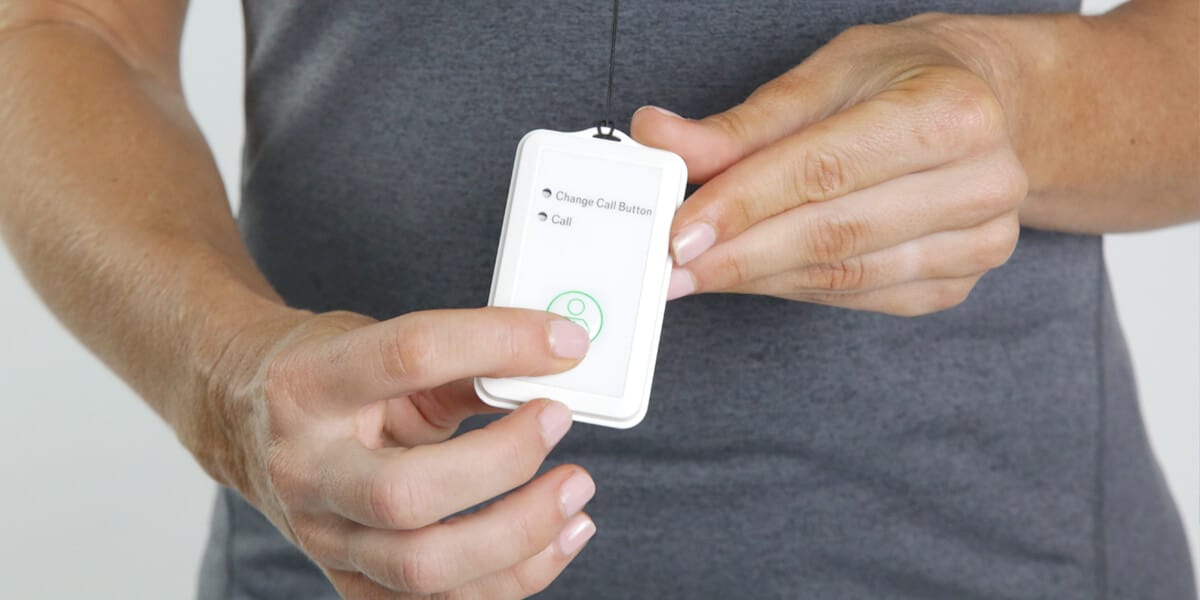
Reducing the overall risk of falls is key to creating a safe space. Take some time to evaluate the bedroom, then eliminate any potential tripping hazards. Next, be proactive and implement precautions that will help minimize injury in the case that a fall does occur. Here are the hazards to look for and ways you can make the bedroom safer.
A bed alarm pad can be placed discreetly under the sheets and is designed to alarm when pressure is removed from the pad; which alerts caregivers that their patient or loved one is trying to exit the bed without assistance.
You may also want to consider alerts that your loved one can wear around their neck and press themselves in the case of an emergency or remote patient monitoring.
A fall mat can help lessen the risk of severe injuries and provide extra padding in case your loved one falls while getting in or out of bed. These mats are designed with smooth, beveled edges that can be easily navigated and don’t pose a threat to tripping.
C ome up with a safety plan in the event of an evacuation due to fire or emergency . C onsider increased risks due to pre-existing conditions, check your alarms, and make sure your loved one has easy access to a phone. Being prepared for an emergency can make all the difference.
If your loved one has a pre-existing condition, he or she is at higher risk from suffering a fall or injury and you should be even more diligent about bedroom safety. Some of these conditions may include:
Certain side effects from medications or prescription drugs can also play a role in increasing fall risk.
Don’t forget to take into account safety protocol for required medical equipment; for example, if your loved one requires oxygen, the tank will need to be stored properly and kept away from any heat source.
Other medical devices may include sleep apnea or CPAP machines. Make sure cords are tucked away safely to avoid tripping and that parts are cleaned routinely to avoid compromising immune health.
Whether it’s a temporary IV pole or a walking aid, think ahead and make sure the room is optimized for his or her individual needs.
It’s important to keep smartphones at an arm's reach incase of an emergency. Set up an organized charging station on the nightstand for devices, but you should also include access to a landline. If the power goes out, and devices are unable to charge, a corded landline will continue to work. Make sure that emergency numbers are stored or displayed conveniently for quick dial.
Routinely inspect and test all smoke detectors, carbon monoxide detectors, burglar, and fall safety alarms for proper functioning. These alarms often play a huge role in the case of an emergency and your loved one’s safety.
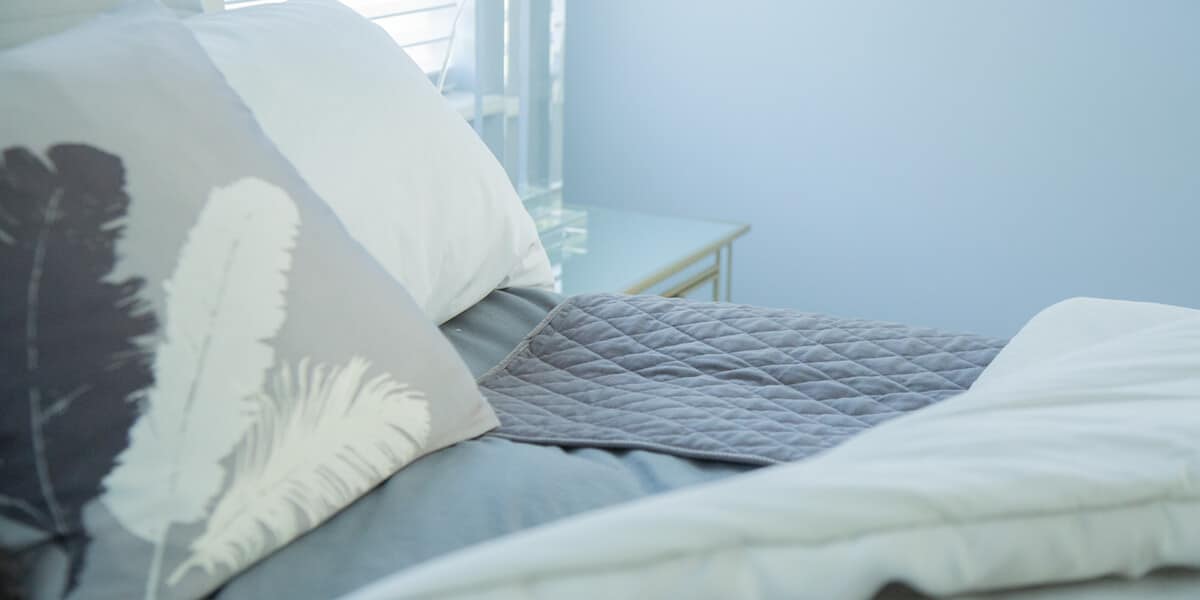
Incontinence is a very common problem that tends to increase as we age. This can be especially difficult for those who have limited mobility and have trouble getting to the bathroom in time. Here’s how you can help reduce accidents, protect the mattress, and help your loved one feel more comfortable.
Make sure the path to the bathroom is free of obstructions and tripping hazards. If your patient or loved one uses a walking aid, have it be easily accessible. A bed rail can also help with exiting the bed more easily.
A commode can be placed at the bedside or in close proximity to help reduce accidents. This may be the best option if getting to the bathroom is too difficult due to limited mobility or accessibility. These lightweight frames are easy to clean, fold up, and store away if need be.
In the case of an accident, or even just a spill, a waterproof mattress protector will help preserve the integrity of your mattress against stains and odors by providing a barrier. If an accident does occur, simply remove and wash.
Incontinence pads are another great option for protecting your mattress from moisture. You can purchase disposable or reusable pads and place them on top of the sheets. The pads will keep both your loved one and the mattress dry.
An old mattress can have direct effects on your health. Poor or worn-out support can lead to back pain and decreased quality of sleep. Additionally, over time sweat and moisture can harvest mold and dust mites which are harmful to your respiratory and skin health.
There are a lot of perks to an adjustable bed or bed frame. Not only do they allow you to sit up comfortably (and easily) in bed, depending on the model, they allow for customizable sleeping positions, adjustable firmness, and even massage features at the touch of a button. Other benefits include:
Depending on your loved one’s existing conditions or mobility level, a hospital bed may be the most convenient option. These beds can be raised and lowered to ease caretaking and transferring needs. They are also designed with safety in mind and come equipped with side rails that help with adjusting positions and prevent falling out of bed.

If your loved one has minimal mobility or is recovering from surgery or an injury, you might want to consider an alternating pressure mattress. These mattresses are used to prevent the development of bedsores using individual cells that cycle air to relieve vulnerable pressure points and reduce the need for manual repositioning.
If you do not have the correct bed frame for a full alternating mattress, there are pressure distributing overlays that can be installed directly on top of an existing mattress.
If you’re not ready for a new mattress, memory foam toppers are a great way to increase comfort and support. Additionally, the use of positioning pillows can help your loved one to relax comfortability, provide back support, and reduce pressure off joints. Just be sure to take into consideration the user’s capabilities and make sure these pillows don’t hinder the ability to exit the bed or pose a tripping threat.
Take a look at how high the bed is off the ground. The ideal height should be between 20 and 23” from the top of the mattress to the ground. A bed that is too low will make bending and standing in and out of bed difficult. If you need to raise the bed, you can look at new frames or use bed risers for a quick fix.
On the opposite hand, make sure the bed is not too high; which also makes it difficult for those with limited mobility and more dangerous if one was to fall from the bed.
Tip: Check that your loved one is able to sit at the edge of the bed, place both feet firmly on the floor with hips positioned slightly above the knees.
Good flooring should be durable, easy to maneuver, and clean. Ask yourself these questions as you evaluate the bedroom floor:
Each type of flooring poses its own risks. Consider the pros and cons of the different options and the precautions you should take, then decide if you need to replace the flooring.
While carpet can provide a softer, more padded, surface it can make navigating canes, walkers, and wheelchairs more difficult. Additionally, over time the fibers collect allergens that can negatively affect respiratory health.
Both of these surfaces function very similarly with hardwood being the more expensive option and a bit harder to maintain. Laminate is easier to maintain, wipe clean, and more resistant to stains. They both provide a smooth surface that is easy to navigate with walking aids but can become slippery. If your loved one is mobile and walking, have them wear non-slip socks or shoes with good tread.
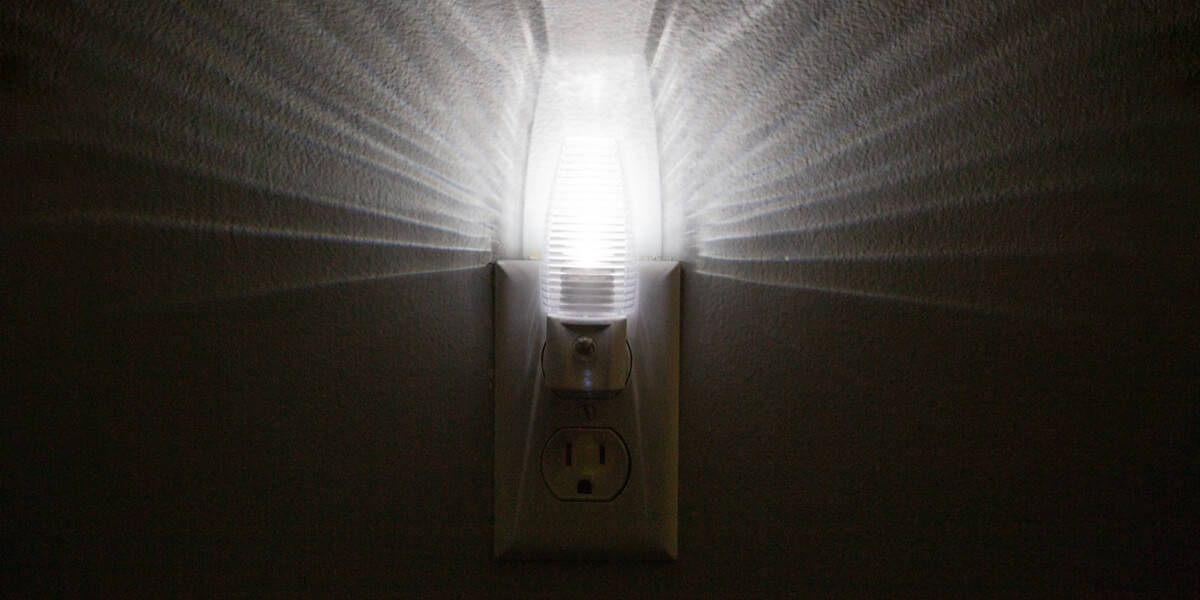
Adequate and easy to access lighting is very important for the elderly when navigating the bedroom. A well-lit room should have minimal glare, lights shouldn’t be too bright or too dim; which both could impair vision. Here are some options to help minimize the risk of accidents and improve lighting:
Do your best to eliminate unnecessary clutter throughout the room. Think about the following areas and declutter where you can.
Check that all walkways are clear of clutter so that your loved one can safely navigate around the room. This includes the route to the bathroom, the entrance/exit, and access to the closet or dresser.
These areas are commonly overlooked. Check for overcrowding of unnecessary knick-knacks and decor. Hang pictures on the walls so they aren’t easily knocked over.
This is another place where clutter tends to accumulate. Follow these tips when organizing closet space.
Check the windows and screens. Here are some things to check.
Make sure the bedroom furniture doesn’t compromise the walkways. Pieces that can easily tip should be secured to the wall or removed from the room. Those who are weak or have limited mobility may lean on these items for support. Make sure they can do so safely if they have to.
Tip: Nightstands are most commonly used for support when getting in and out of bed, check that these are sturdy, heavy, and won’t tip under weight.
A couple tips on making sure the doors and doorways are safe.

Everyday items should be easy to access, but avoid cluttering. Here are some tips.
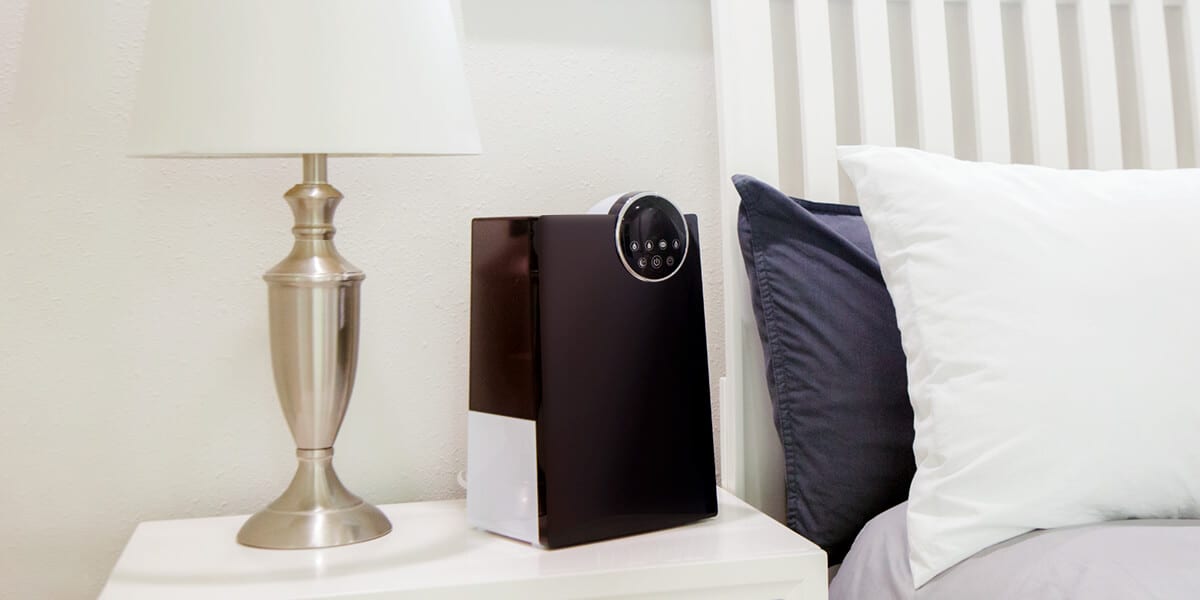
Optimizing the air quality in your loved one’s bedroom can help decrease the risk of respiratory issues like asthma, allergies, and illnesses. Here are a couple ways you can improve the air.
Designed to help circulate air, remove harmful chemicals, neutralize unpleasant odors, and reduce the risk of airborne illnesses, an air purifier is a simple and easy addition to any room in the house. If your loved one struggles with respiratory issues or asthma consider buying an air purifier. There are many different styles, sizes and filter options available to help meet individual needs.
A humidifier helps to add moisture into the air. These are especially useful in dry climates and during winter months. The moisture helps to improve dry skin, nose, throat and lips; plus it helps to reduce and relieve common cold and flu symptoms.
A dehumidifier functions opposite a humidifier by removing moisture from the air. Too much moisture can cause mold and mildew, not to mention attract cockroaches, silverfish and spiders. Allowing for a dehumidifier to run overnight can help balance humidity in the room and rid of allergens.
We all need to achieve optimal sleep to perform at our best, especially as we age and the body becomes more weak. Here are some tips to help your loved one get adequate and quality sleep.
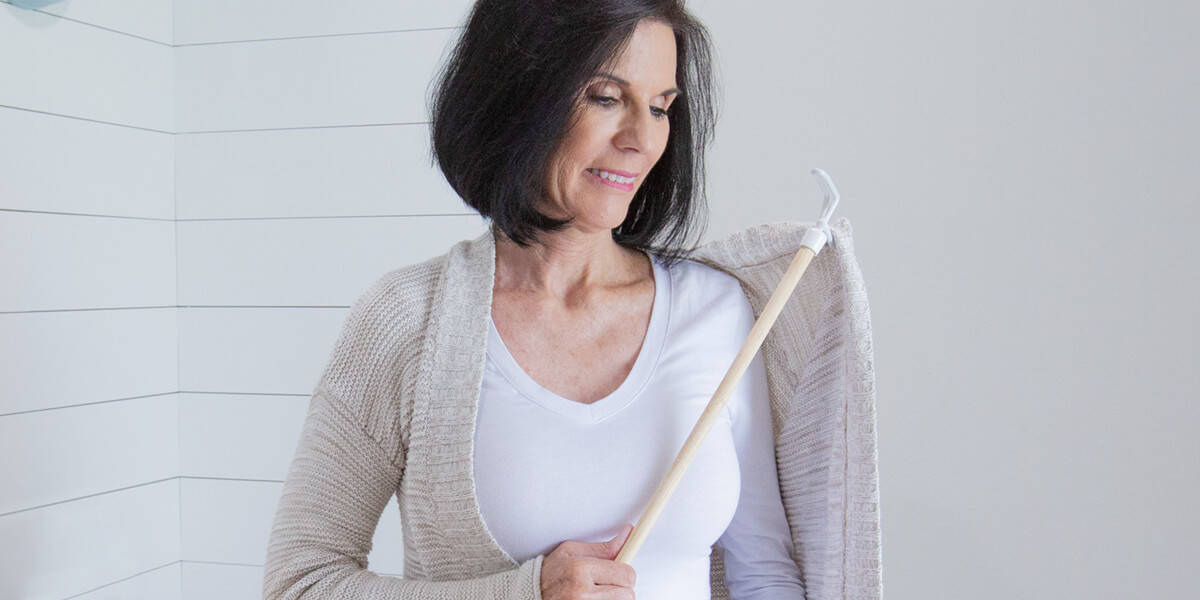
If your loved one is recovering from an injury or surgery, has limited mobility, or trouble with dexterity and fine motor skills, there are tools that can help them get dressed independently and reduce the risk of injuries caused by bending over, twisting, turning or over stretching. Common dressing aids include, dressing sticks, sock assists, button hooks and shoe horns; store these in the top dresser drawer or in the closet where they are easily accessible.
Pets can be great companions and provide emotional support for those who are living alone, but they’re a huge tripping hazard. Pet involved accidents account for thousands of emergency room visits every year. Here are some things you may want to consider.
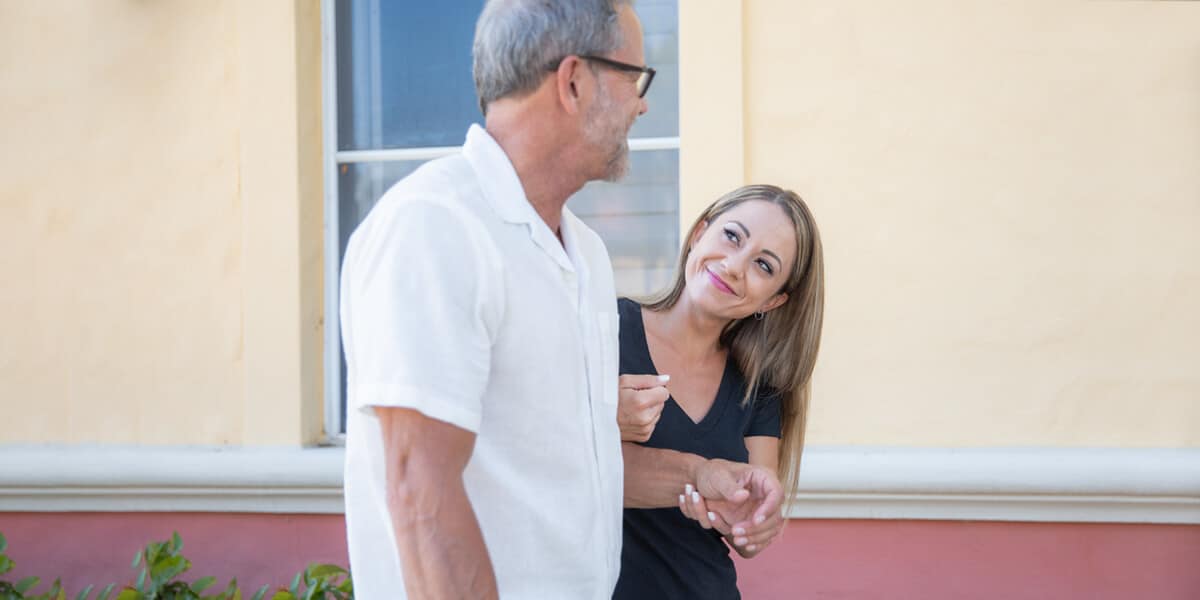
Depending on your loved one’s needs, it may be beneficial to hire or establish a caregiver to assist with daily tasks and help monitor for safety. If you’re not sure if your loved one is ready for a caregiver or not, here are some signs to watch for:
If it’s possible, move the bedroom to the ground floor. This eliminates the need to walk up and down stairs which increases the risk of falls and injury. If you’re unable to relocate the bedroom to the ground floor, consider installing a stairlift to assist your loved one between floor levels.
If the home where your loved one is staying is not safe or equipped for him or her, consider making renovations. These can range from small to large scale depending on an individual's needs. Some medicaid may help pay for these changes, but you’ll need to check for eligibility with your local office first.
If renovations aren’t worth the cost and hassle, you may want to consider relocating your loved one to a home that is better set up for their individual needs. This doesn’t have to mean a care facility, but be sure to consider all your options and what will keep your him or her the safest.
Aging at home is something that most Americans would prefer but, as you can see, a lot of thought needs to go into making sure it is the safest and most logical option. By implementing these tips, suggestions and safety precautions you can do your best to keep your loved one safe at home with some piece of mind.
Sources:
https://pameladwilson.com/ieg2/
https://www.independentliving.co.uk/advice/fall-prevention/
https://www.ncoa.org/news/resources-for-reporters/get-the-facts/falls-prevention-facts/
https://elizz.com/caregiver-resources/caregiving-tips/bedroom-safety-for-seniors
Bedroom Safety Products

![The Benefits of Flexibility [A.K.A. The Secret Sauce for Aging]](http://www.vivehealth.com/cdn/shop/articles/Smiling-retired-woman-listening-to-music-while-stretching-legs-outdoors._600x.jpg?v=1713090677)
